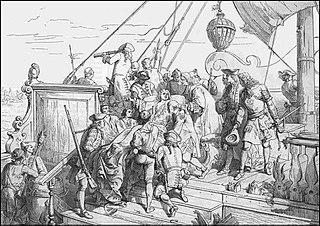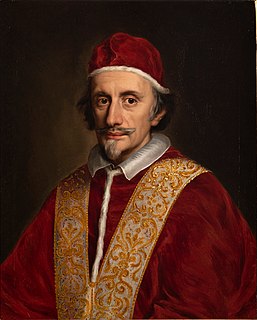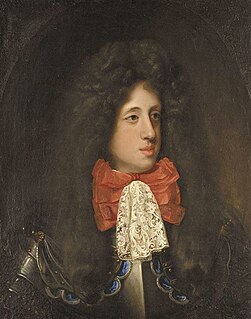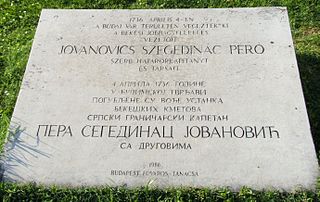 W
WAdam Zrinski was a Croatian count and officer in Habsburg Monarchy army service, a member of the Zrinski noble family.
 W
WPope Alexander VIII, born Pietro Vito Ottoboni, was Pope from 6 October 1689 to his death in 1691. He is to date the last pope to take the pontifical name of "Alexander" upon his election to the papacy.
 W
WAugustus II the Strong, also known in Saxony as Frederick Augustus I, was Elector of Saxony from 1697, Imperial Vicar and elected King of Poland and Grand Duke of Lithuania in the years 1697–1706 and from 1709 until his death in 1733. He was succeeded by his son, Augustus III of Poland.
 W
WȘerban Cantacuzino, was a Prince of Wallachia between 1678 and 1688.
 W
WConstantin or Constantine Cantemir (1612–1693) was a Moldavian nobleman, soldier, and statesman who served as voivode between 25 June 1685 and 27 March 1693. He established the Cantemir dynasty which—with interruptions—ruled Moldavia prior to the imposition of phanariot rule.
 W
WArsenije III Crnojević was the Archbishop of Peć and Serbian Patriarch from 1674 to his death in 1706. In 1689, during the Habsburg-Ottoman War (1683-1699), he sided with Habsburgs, upon their temporary occupation of Serbia. In 1690, he left the Patriarchal Monastery of Peć and led the Great Migration of Serbs from Ottoman Serbia into the Habsburg Monarchy. There he received three charters, granted to him by Emperor Leopold I, securing religious and ecclesiastical autonomy of Eastern Orthodoxy in the Habsburg Monarchy. In the meanwhile, after restoring their rule in Serbian lands, Ottomans allowed the appointment of a new Serbian Patriarch, Kalinik I (1691-1710), thus creating a jurisdictional division within the Serbian Orthodox Church. Until death, in 1706, Patriarch Arsenije remained the head of Serbian Orthodox Church in Habsburg lands, laying foundations for the creation of an autonomous ecclesiastical province, later known as the Metropolitanate of Karlovci.
 W
WCharles V, Duke of Lorraine and Bar succeeded his uncle Charles IV, Duke of Lorraine as titular Duke of Lorraine and Bar in 1675; both duchies were occupied by France from 1634 to 1661 and 1670 to 1697.
 W
WVoivode George Ducas, was three times prince of Moldavia and one time prince of Wallachia.
 W
WPrince Eugene Francis of Savoy–Carignano better known as Prince Eugene was a field marshal in the army of the Holy Roman Empire and of the Austrian Habsburg dynasty during the 17th and 18th centuries. He was one of the most successful military commanders of his time, and rose to the highest offices of state at the Imperial court in Vienna.
 W
WFerdinando Carlo Gonzaga was the only child of Duke Charles II of Mantua and Montferrat, and the last ruler of the Duchy of Mantua of the House of Gonzaga.
 W
WLodovico Flangini was a Venetian noble who served as Capitano Straordinario delle Navi during the Seventh Ottoman–Venetian War.
 W
WLiverios Gerakaris, more commonly known by the hypocoristic Limberakis, was a Maniot pirate who later became Bey of Mani.
 W
WDonat John Count Heissler of Heitersheim was an Imperial and Royal Marshal of the Habsburg empire. He was deeply involved in the conflict between the Austrian and Turkish empires. He was born in 1648 and died at Szeged on 1 September 1696.
 W
WPope Innocent XI, born Benedetto Odescalchi, was Pope from 21 September 1676 to his death on August 12, 1689. He is known in Budapest as the "Saviour of Hungary".
 W
WStanisław Jan Jabłonowski (1634–1702) was a Polish nobleman, magnate, Grand Guardian of the Crown since 1660, the Grand Camp Leader of the Crown since 1661, voivode of the Ruthenian Voivodship since 1664, Field Crown Hetman since 1676, Great Crown Hetman since 1683 and castellan of Kraków since 1692. Jabłonowski was a candidate for the Polish Throne following the death of King John III Sobieski.
 W
WStojan Janković Mitrović was the commander of the Morlach troops in the service of the Republic of Venice, from 1669 until his death in 1687. He participated in the Cretan and Great Turkish War, as the supreme commander of the Venetian Morlach troops, of which he is enumerated in Croatian and Serbian epic poetry. He was one of the best-known uskok/hajduk leaders of Dalmatia.
 W
WJohn III Sobieski was King of Poland and Grand Duke of Lithuania from 1674 until his death.
 W
WCount Otto Wilhelm Königsmarck was a Swedish military officer from Minden. He attained the rank of field marshal in 1676, commanded the Battle of Stralsund (1678), and became Governor General for Swedish Pomerania from 1679 to 1687. He was the son of Hans Christoff Königsmarck and the brother of Conrad Christoff Königsmarck. He was also the uncle of Aurora Königsmarck, Amalia Wilhelmina Königsmarck, Philip Christoph Königsmarck and Karl Johann von Königsmarck. Alongside Francesco Morosini, he led the Venetian conquest of the Morea in the early years of the Morean War, and died of the plague during the Siege of Negroponte (1688).
 W
WLeopold I was Holy Roman Emperor, King of Hungary, Croatia, and Bohemia. The second son of Ferdinand III, Holy Roman Emperor, by his first wife, Maria Anna of Spain, Leopold became heir apparent in 1654 by the death of his elder brother Ferdinand IV. Elected in 1658, Leopold ruled the Holy Roman Empire until his death in 1705, becoming the longest-ruling Habsburg emperor.
 W
WLouis William, Margrave of Baden-Baden was the ruling Margrave of Baden-Baden in Germany and chief commander of the Imperial army. He was also known as Türkenlouis for his many defeats of Turkish armies. After his death in 1707, his wife, Sibylle of Saxe-Lauenburg, acted as regent of Baden-Baden during the minority of his eldest son, who succeeded him as Margrave of Baden-Baden.
 W
WMaximilian II, also known as Max Emanuel or Maximilian Emanuel, was a Wittelsbach ruler of Bavaria and a Prince-elector of the Holy Roman Empire. He was also the last governor of the Spanish Netherlands and duke of Luxembourg. An able soldier, his ambition led to conflicts that limited his ultimate dynastic achievements.
 W
WDuke Maximilian William of Brunswick-Lüneburg, often called Max, was a member of the House of Hanover who served as an Imperial Field Marshal.
 W
WFrancesco Morosini was the Doge of Venice from 1688 to 1694, at the height of the Great Turkish War. He was a member of a famous noble Venetian family which produced several Doges and generals. He "dressed always in red from top to toe and never went into action without his cat beside him."
 W
WPaul I, Prince Esterházy of Galántha was the first Prince Esterházy of Galántha from 1687 to 1713, Palatine of the Kingdom of Hungary from 1681 to 1713, and an Imperial Field Marshal. Paul was also an accomplished poet, harpsichordist, and composer. He actively participated in various battles against the Ottoman Turks during the Fourth Austro-Turkish War (1663–1664) and the Great Turkish War (1662–1669). Paul is credited with establishing the wealth, power, and influence of the Princely House of Esterházy.
 W
WPetar Jovanović, known as Pera Segedinac, was a Habsburg Serb military officer, a captain in Pomorišje. He led a Serb revolt in 1735.
 W
WAndrea Pisani was a Venetian noble who served as Captain General of the Sea during the Seventh Ottoman–Venetian War.
Feliks Kazimierz "Szczęsny" Potocki (1630–1702) was a Polish noble, magnate and military leader.
 W
WMarshal Johann Matthias Reichsgraf von der Schulenburg was a German aristocrat and general of Brandenburg-Prussian background who served in the Saxon and Venetian armies in the early 18th century and found a second career in retirement in Venice, as a grand collector and patron. His sister was Melusine von der Schulenburg, Duchess of Kendal. His father was Gustavus Adolphus, Baron von der Schulenburg.
 W
WCount Ernst Rüdiger von Starhemberg was military governor of Vienna from 1680, the city's defender during the Battle of Vienna in 1683, Imperial general during the Great Turkish War, and President of the Hofkriegsrat.
 W
WGuido Wald Rüdiger, count of Starhemberg was an Austrian military officer (commander-in-chief).
 W
WEmeric Thököly de Késmárk was a Hungarian nobleman, leader of anti-Habsburg uprisings like his father, Count István Thököly, before him. Emeric was prince of Upper Hungary, an Ottoman vassal state, from 1682 to 1685, and briefly Prince of Transylvania during the year 1690. Having formed an alliance with the Turks, Thököly assisted the Ottoman Empire at the Battle of Vienna in 1683 and led the Turkish cavalry at the battle of Zenta. Refusing to surrender to Habsburg Emperor Leopold I, Thököly lost his principality of Upper Hungary and finally retired to Galata, near Istanbul, with large estates granted him by Sultan Mustafa II.